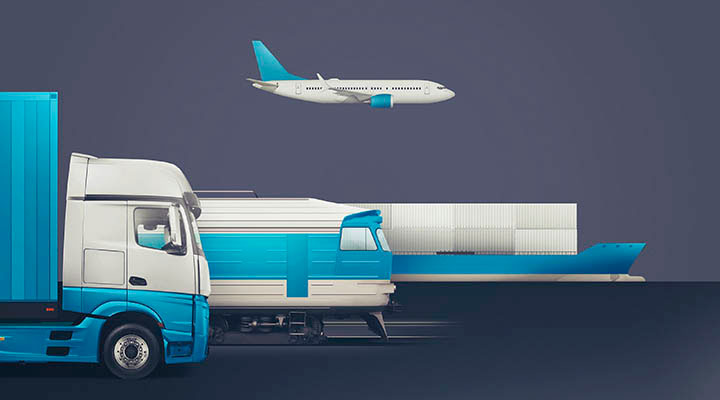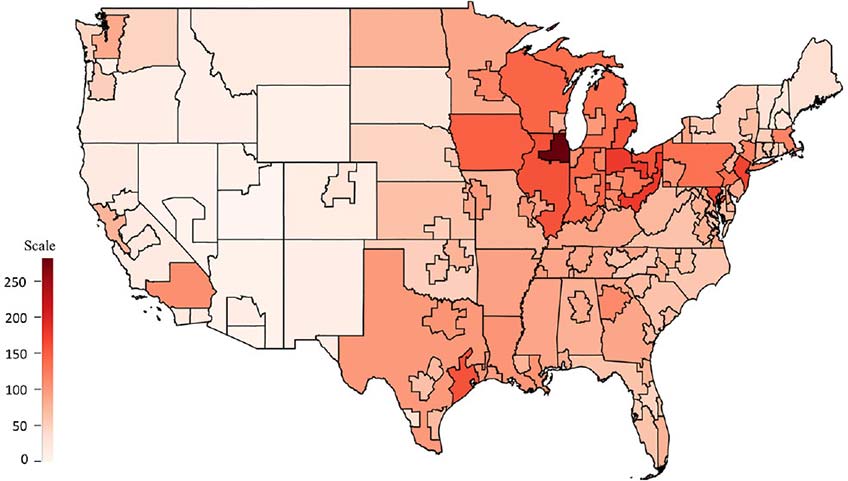New Metric Quantifies Productivity of Freight Mobility Systems
Capturing the Impacts of Emerging Technologies and Trends

From the freight perspective, mobility is defined as the ability of a system to transport goods to their destinations. Productivity measures mobility output for a unit of input, which reflects the efficiency of the freight system. The F-MEP metric can be viewed as an indicator that quantifies the productivity of the freight transportation system—its ability to transport the maximum amount of goods from a location to any other location with a minimum expenditure of time, money, and energy.
Trends such as the rise in e-commerce, increased vehicle electrification, connected mobility, automation, and new forms of delivery are poised to bring a paradigm shift in freight movement. In addition to modeling and forecasting emerging freight trends, having a way to quantify their impacts on freight mobility is critical. The new Freight Mobility Energy Productivity (F-MEP) metric does just that.
"Conventional freight performance metrics such as truck-miles, ton-miles, and value-miles fall short of accurately capturing the impact of emerging technologies on the performance of freight systems," said Kyungsoo Jeong, NREL systems engineer and lead author of a recent Transportation Research Record article on the F-MEP metric. "We need appropriate metrics to quantify the changes in system efficiency and productivity in light of new technologies and trends."
Addressing that need, NREL researchers developed the F-MEP metric to quantify the productivity of current and future freight systems from the shipper’s perspective. Building on accessibility theory, the F-MEP metric provides a mathematical framework for quantifying freight productivity—connecting freight demand to freight supply, while accounting for inputs such as time, energy, logistics cost, and ease of shipping goods via various modes.
Quantifying Freight Transport Across the United States
Researchers implemented the F-MEP metric using data from the U.S. Department of Transportation's Freight Analysis Framework (FAF) along with other sources to quantify the productivity of inter-city freight mobility in the United States.

U.S. map showing zonal F-MEP scores aggregated over truck, rail, water, and air modes. Map is color coded in a red gradient scale with darker red indicating higher scores for freight in given FAF zones.
"Preliminary results from the F-MEP implementation show intuitive trends, both at the aggregate level as well as at the disaggregate level of mode- and commodity-specific F-MEP calculation," said Venu Garikapati, NREL transportation data analytics project leader. "A correlation analysis between sector-specific employment and F-MEP scores shows that the F-MEP can be a viable indicator to evaluate the productivity of freight systems."
F-MEP as a Scenario Analysis Tool
NREL conducted a scenario analysis to assess the capability of the new metric in tracking system-level freight productivity improvements resulting from vehicle electrification. The F-MEP metric successfully captured and illustrated freight system performance improvements from vehicle electrification with geographic specificity, demonstrating that it can be used as a scenario evaluation tool to assess the impacts of various emerging transportation trends.
What's Next?
NREL researchers will integrate the new metric into freight forecasting models to capture a variety of secondary effects of emerging trends on freight travel. Additionally, researchers will compute the metric at finer geographical resolutions, account for multimodal characteristics for inter-city freight, and develop an intra-city F-MEP metric to accommodate the distinct characteristics of urban freight movement.
Watch this short video on the original MEP and the new F-MEP. Learn more about NREL's transportation research.
Last Updated May 28, 2025
